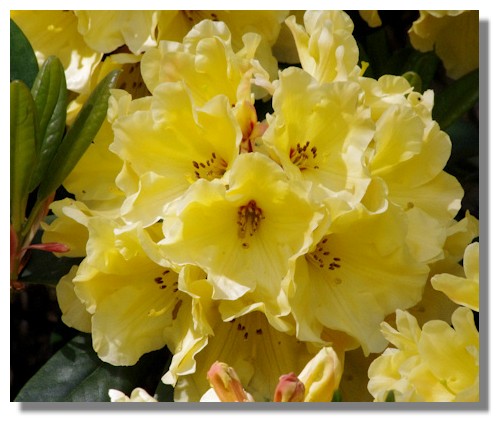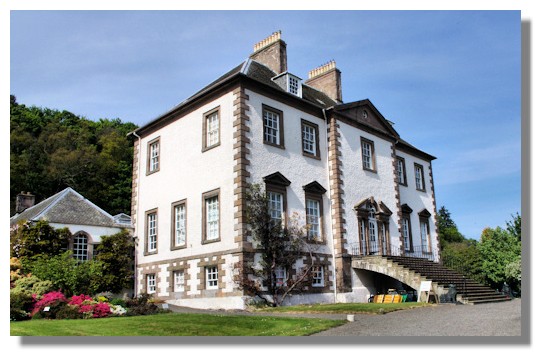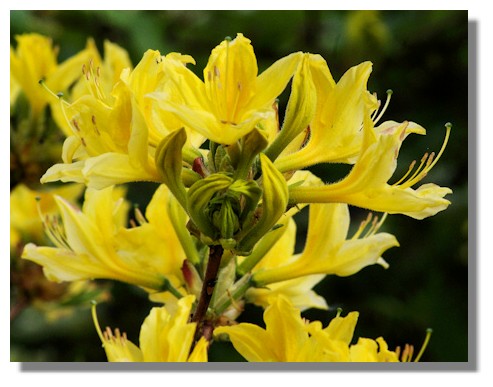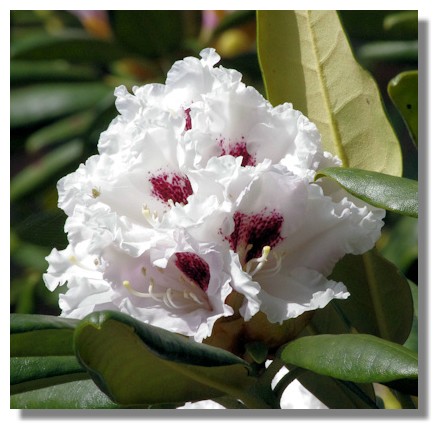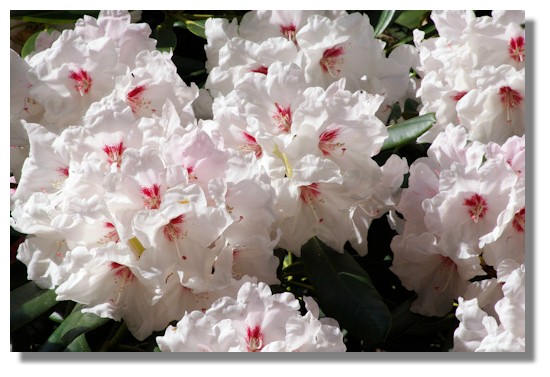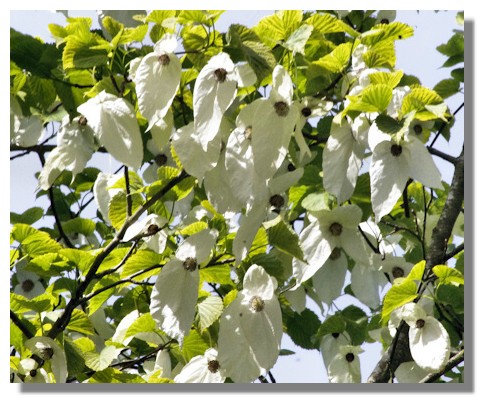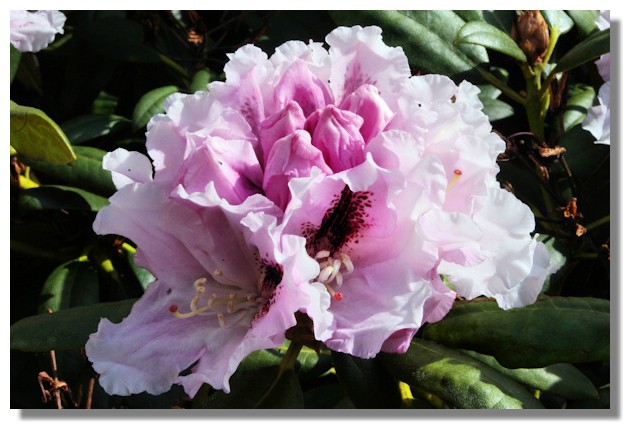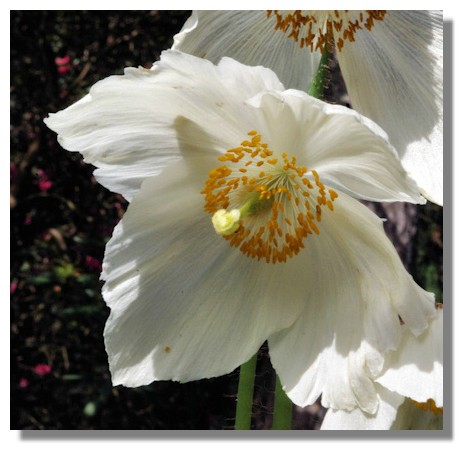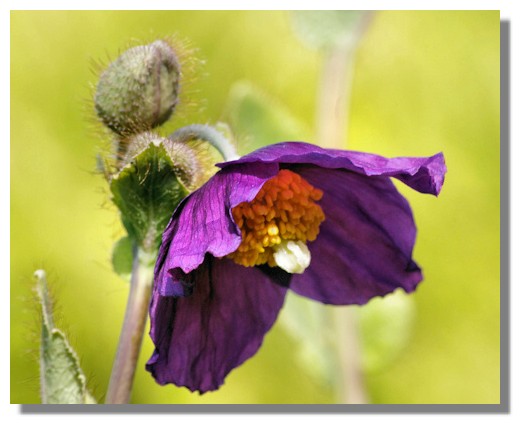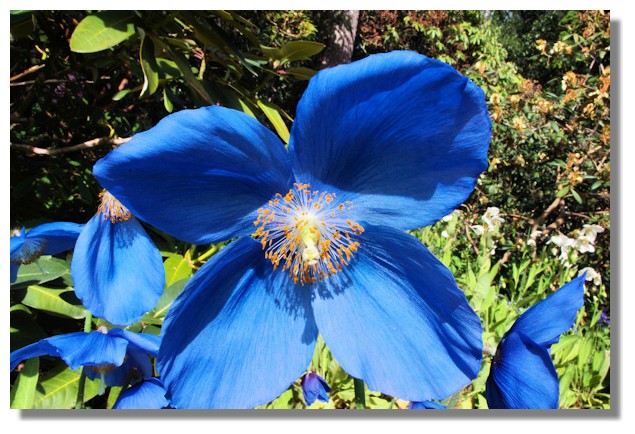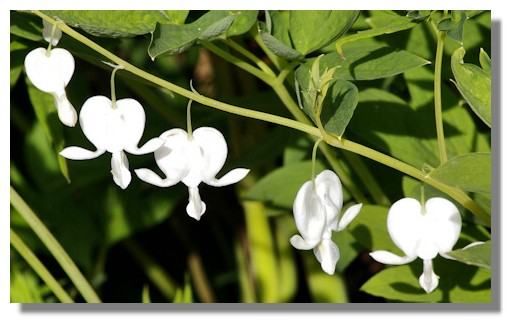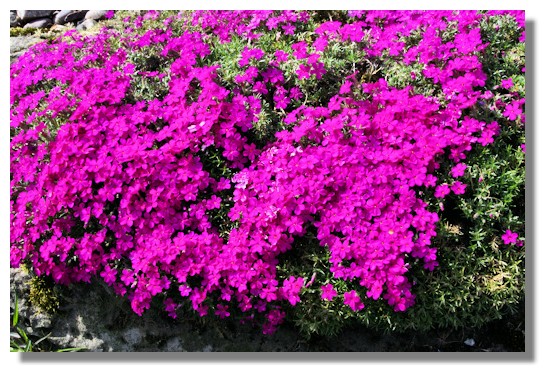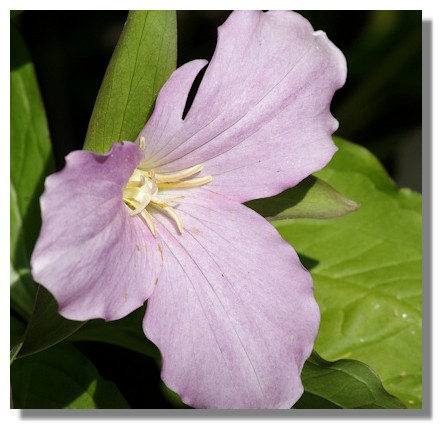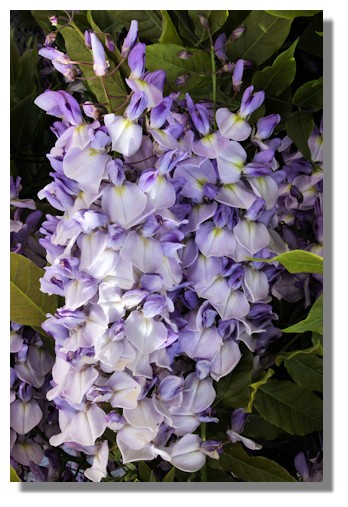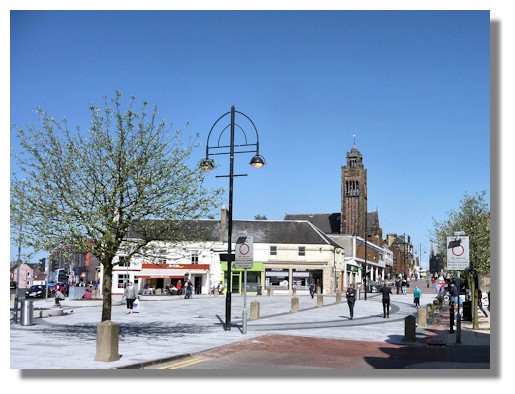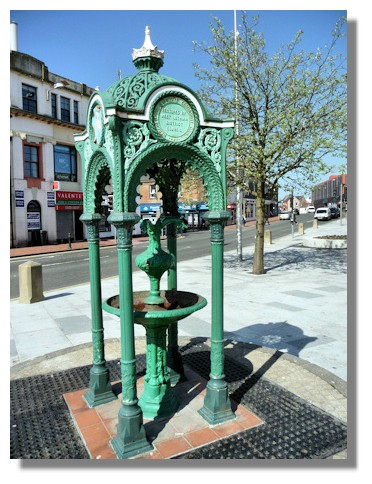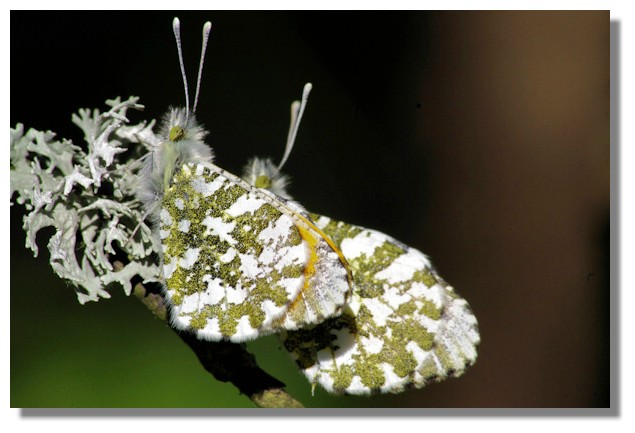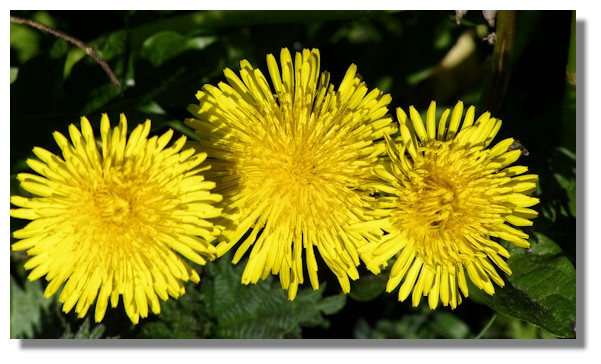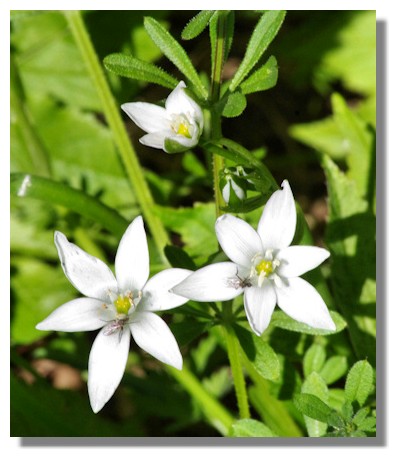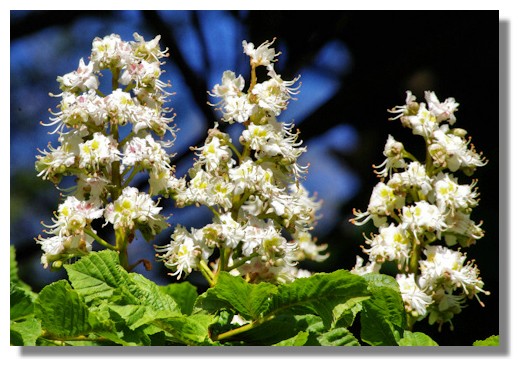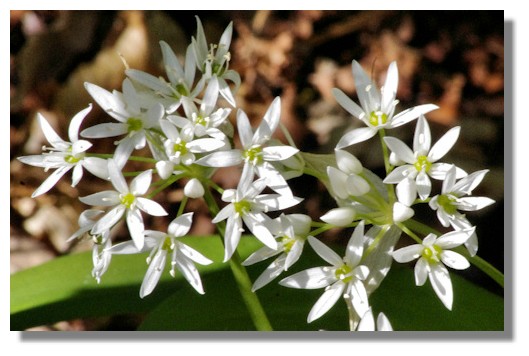Scottie's Monthly Photo Diary
- May 2011 Part 1
Background
I never go anywhere in Scotland without my camera and I take photographs wherever I go. Sometimes I go somewhere specifically to take photographs with a view to adding another page to the Rampant Scotland site. On other occasions I just see something that makes an attractive picture or else it's another graphic to add to the library to perhaps use on a future occasion. This is a selection of the best photographs I took in the first half of May 2011 with a commentary on each one. It thus forms a pictorial diary of my travels during those weeks which can be shared by everyone!
Glendoick
I've been to Glendoick (located between Perth and Dundee) on many occasions but didn't get the opportunity to go there in 2009 and 2010. During late April and early May this year, although there were a number of sunny days in the west of Scotland, the east coast of the country, facing the North Sea, was affected by cloud and easterly winds which kept the temperature lower than the west. Even so, we set off one day on the 90 minute drive to Glendoick. At this time of year, visiting Glendoick you get four gardens rolled into one - with the Pagoda demonstration garden beside a commercial garden centre, Glendoick House Garden (open to the public only for about two months, from around the middle of April to mid-June), Glendoick Nursery (where many of the plants sold by the garden centre are grown) and Woodland Walks through the pathways between well established rhododendrons, azaleas, mecanopsis, magnolia and many other unusual shrubs and plants.
There's an extended "Places to Visit" page on Glendoick with a selection of 27 pictures from my previous visits at Places to Visit -Glendoick Gardens
Glendoick is recognised for its large range of azaleas, rhododendrons and mecanopsis. The azaleas such as this one come in a wide range of colours and many have a strong, sweet scent.
Three generations of plant hunters and growers who have travelled to Burma and China from Glendoick to collect interesting plants and bring them back to Scotland. Rhododendrons are a particular specialty, with the experts at Glendoick also creating now hybrid varieties.
The Cox family who own Glendoick have written books on rhododendrons and are experts on the various varieties. They would know by sight the names of all of the rhododendrons growing in Glendoick. During the years I have been going to Glendoick, the number of shrubs still with their name labels on them has declined so unfortunately I don't know the particular varieties in these pictures.
The Handkerchief Tree is easy to recognise as long as those unusual flowers are visible. The correct botanical name is "Davidia" and it is also known as the Chinese dove tree. Since seedlings can take 10-20 years to flower, new plants are often created by layering low-growing branches in the ground so that they take root.
Even in early May some of the rhododendrons were already showing signs of being over, with brown patches showing in the petals. But there are so many varieties in the woodland area at Glendoick there is always another one coming into bloom over an extended period, such as this lovely pink one with a dark, speckled throat.
Mecanopsis are often a brilliant blue, but this pure white variety is one of a range of these lovely Himalayan flowers growing at the gardens at Glendoick. Mecanopsis flowers tend to point down to the ground making them more difficult to photograph but this one was more co-operative and made photography easy!
This more unusual Mecanopsis goes by the grandiose name of "Mecanopsis Betonicifolia Hensol Violet".
The blue Himalayan Mecanopsis is the most popular variety of this member of the poppy family. But Mecanopsis also come in yellow, red, pink, purple and white. The Himalayan Poppy thrives in shady gardens so is ideally suited for the woodland area at Glendoick. Close-up photographs on Web pages often don't show the large size of these flowers - up to four inches across.
The buds on this azalea are just bursting into bloom. I often think that those long stamens look a bit like eye-lashes!
This beautiful white form of Dicentra is not the one usually associated with its alternative names of "Bleeding Heart" and "Dutchman's Breeches" which are mainly red in colour. This particular plant was growing in the demonstration garden at Glendoick.
Another plant in the Pagoda demonstration garden was this bright and cheerful Phlox "Crackerjack" rolling over onto the footpath.
Yellow is an unusual colour for a rhododendron but there were several of them at Glendoick, brightening up the shaded areas among all the mature bushes competing with one another.
There are a number of varieties of Trillium Grandiflorum (Wood Lily) at Glendoick, with their triangle of three leaves topped by three-petalled flowers. They originated in North America and prefer cool, shady conditions. In addition to white, there are also some that are streaked white and pink, another which is almost maroon and one where the white flowers turn yellow as they age. I understand that Trillium is the emblem and official flower of the Canadian province of Ontario and the large white trillium is the official wildflower of Ohio, USA.
Wisteria flowers are produced in pendulous racemes 10 to 80 cm long, similar to those of the yellow Laburnum, but are purple, violet, pink or white. Wisteria are part of the pea family and can grow to a large size - the largest one is in Japan which started out around 1870 and has spread to cover approximately 1,990 square meters (a half acre).
Bathgate
Bathgate in West Lothian is not far from the M8 motorway connecting Edinburgh and Glasgow and Edinburgh Airport is 13 miles (21 km) away. It is situated 2 miles south of the Neolithic burial site at Cairnpapple Hill, so Bathgate and the surrounding area has signs of habitation since about 3500 BC. In the 19th century the largely rural nature was transformed by the opening of a railway line to Edinburgh and local mines and quarries were extracting coal, lime, and ironstone. Commercial oil-works, manufacturing paraffin oil and paraffin wax, signalled an end to the rural community of previous centuries. That process was accelerated when the distilling of paraffin from local shale began. The landscape of the Lothians is dotted with the orange spoil heaps (called Bings) from this era. Collieries and quarries and the associated “traditional” industries (brickworks, steelworks) also sprang up. To those of my generation, Bathgate is associated with industrialisation - and latterly with a failed car manufacturing plant. In 1992,the US company Motorola opened a mobile phone manufacturing plant in Bathgate but in 2001 the company announced the closure of the plant with the loss of over 3,000 jobs. So I was surprised to find a thriving town centre which had obviously been spruced up in recent decades. The picture above is of George Place (also known as the "Steelyard") in the centre of the town.
The present Bathgate High Church opened in 1884 on the site of an earlier building dating from 1739. It has a flat-beamed ceiling and a horseshoe gallery, with a rib-vaulted apse. Much of the £8,000 cost of the building was collected from the congregation.
Clydesdale Bank was founded in 1838 by a group of Glasgow merchants. As a result, unlike the other three major banks in Scotland with their head offices in Edinburgh, Clydesdale is based in Glasgow but has an extended branch network across Scotland and also into England. It was taken over by the Midland Bank (based in England) in 1919. The Clydesdale Bank was later merged with North of Scotland Bank when Midland acquired it in 1926. Clydesdale later became part of the National Australia Group (in 1987). As in many other provincial towns, as branch banks needed more space, they often took over existing large houses. That looks like what happened here in Bathgate.
Ornate iron fountains were popular features in Victorian Britain. In recent years, a number have been restored (though often without any water being supplied to them). This Bathgate Commemorative Water Fountain originally marked the opening of The Bathgate Water Works in 1878.
Baldernock
Having returned to Baldernock in the hope of capturing some more photographs of the Orange Tip butterflies, I spent a frustrating afternoon chasing after hyper-active ones that refused to stop anywhere for any length of time. Then, later in the afternoon, I came across not one but two Orange Tips, side by side, apparently enjoying a nibble at some fungus on the branch of a tree. After concentrating on the camera view-finder for a while taking a number of pictures I then discovered two more Orange Tips on other nearby branches doing the same thing. Talk about waiting at a bus stop for ages and then four come along at once!
Dandelions are of course wild flowers and in gardens are treated as weeds. Yet they produce such bright, golden yellow, attractive flowers I often think they would enhance any suburban garden!
As a youngster, I was told that if you blew on the seed heads of dandelions and counted the number of puffs required to blow them all off, it would tell you the hour of the day. Of course, it was never very accurate....
When we took our children on country walks in Baldernock they enjoyed finding this plant - commonly known as "Stickywillie" which has burrs on it that makes it cling to clothing, a bit like Velcro. It could be put on someone's back very lightly without them knowing and would stay there. While researching the plant after taking this photo, I found for the first time that its proper name is "Galium Aparine".
Another sign of spring is the tall flower spikes of the horse chestnut trees. In the autumn, the resulting chestnuts can be used in games of "conkers".
One of the reasons for the Orange Tip butterflies being prevalent in the Baldernock area is the large number of Ramsoms Garlic plants that grow there. The botanical name is Allium ursinum and it's also known as buckrams, wild garlic, broad-leaved garlic, wood garlic or bear's garlic. The Latin name is due to the brown bear's taste for the bulbs and its habit of digging up the ground to get at them.
If you want to read the other Diary entries going back to 2009, there is an Index page.
